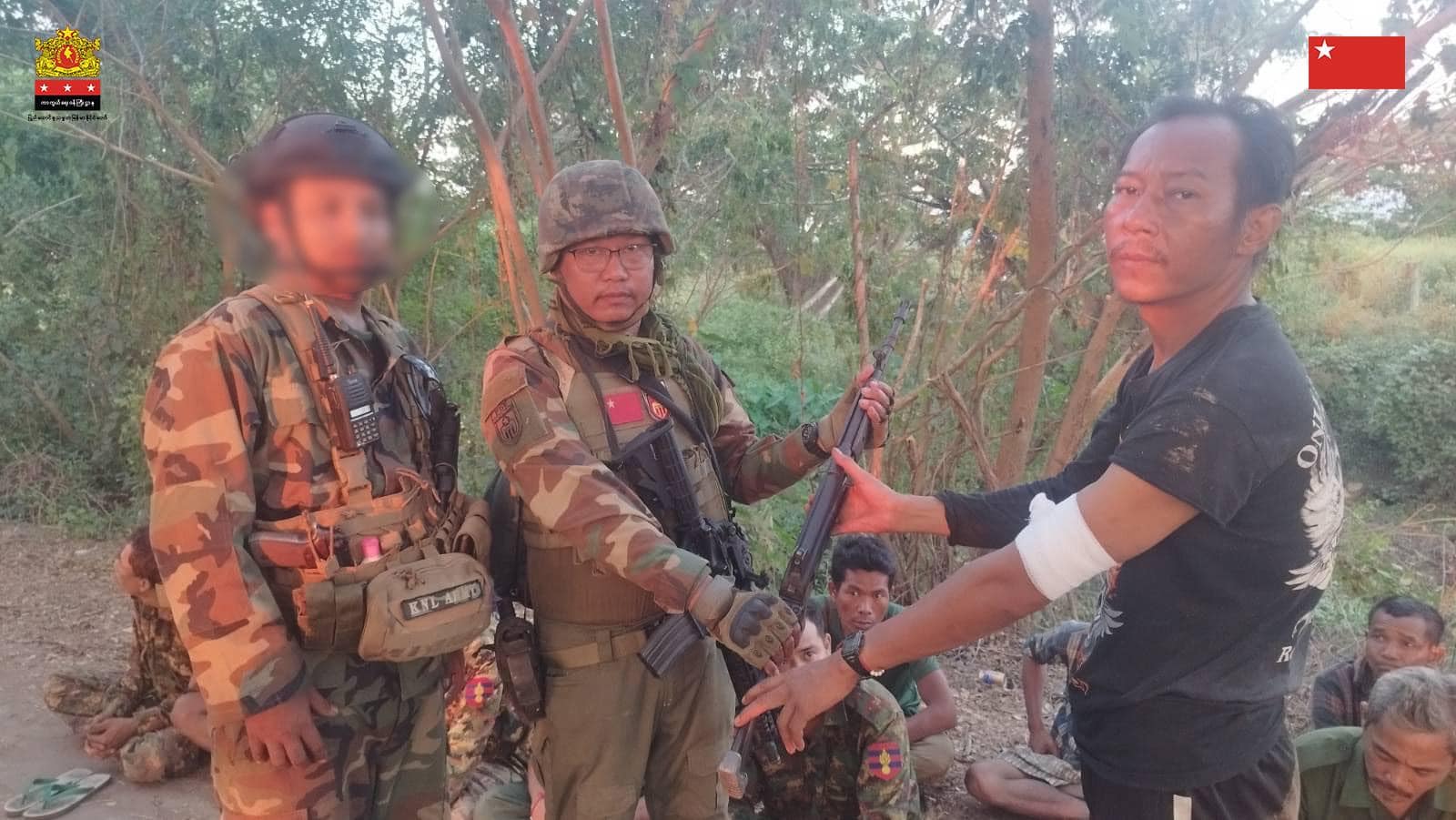‘Military is guardian of democracy’
Junta spokesman Major-General Zaw Min Tun described the military as the father of multi-party democracy in Myanmar, as he attempted to coax ethnic armed organizations to halt their offensive against the regime.
On December 7, the junta spokesman “guaranteed” continued implementation of a multi-party democratic system in Myanmar, claiming the Tatmadaw (Myanmar military) had taken a lead role in securing democracy for the people, including ethnic groups.
A glimpse at Myanmar’s modern history reveals the spokesman’s claim is a blatant distortion of reality. In fact, the reverse is true. The multi-party democracy that had been practiced since independence came to an end when the military led by General Ne Win staged a coup in 1962.
In 1988, mass pro-democracy demonstrations known as the 8888 Uprising triggered general elections two years later. But the military refused to hand over power to the poll-winning National League for Democracy (NLD).
General elections were then held in 2010, 2015 and 2020 under the junta-drafted 2008 Constitution, which was designed to perpetuate the military’s grip on power. The NLD, which is by far the most popular party in Myanmar, won majorities in both the 2015 and 2020 polls, having boycotted the 2010 vote that was widely considered rigged by the regime.
Min Aung Hlaing staged a coup in 2021 as commander-in-chief, ousting the NLD government.
The putsch further cemented the military’s historic role as Myanmar’s democracy destroyer, though that apparently didn’t deter Zaw Min Tun from concocting a different story.
‘Bago defeat fake news’

Resistance forces led by the Karen National Union (KNU) seized Mone town in Kyaukkyi Township, Bago Region on December 2. The town is strategically located on routes to the junta’s nerve center of Naypyitaw and to KNU territory on the Thai-Myanmar border.
The commander of Light Infantry Battalion 590 was among numerous junta troops who surrendered during the attack. Also surrendering within hours of being airlifted to the town were 22 reinforcements, including the deputy battalion commander of Infantry Battalion 84, Major Kyaw Latt Khine.
Zaw Min Tun countered on December 5 that resistance forces were just spreading fake news about Mone. But the spokesman’s lie was exposed by his apparent lack of coordination with junta propaganda papers, which subsequently revealed that the local battalion in Mon town had made a “temporary tactical withdrawal” with junta soldiers evacuated in planes.
The regime has lost control of around 20 towns in northern Shan State, Chin, Karenni states and Sagaing Region since the resistance launched its Operation 1027 offensive in late October.

‘No surrenders’
Hundreds of junta soldiers have surrendered since revolutionary forces launched Operation 1027 in northern Shan State in late October and sparked an expanding offensive in Chin, Mon, Karenni (Kayah) and Rakhine states.
However, Zaw Min Tun dismissed news of mass surrenders on December 9, saying revolutionary forces were just issuing photos of soldiers and police who had been arrested by the resistance while on leave before the offensive began on Oct. 27.
No Tatmadaw soldier would be cowardly enough to surrender, he declared.

But video evidence tells a different story. A clip of junta soldiers surrendering at their base at Loikaw University in the Karenni State capital has been widely shared on social media. The largest capitulation of junta troops, however, was in Kokang, northern Shan State, where three battalions – Infantry Battalions 125 and 143 and Light Infantry Battalion 129 – surrendered to resistance forces.
Some of the soldiers said they were forced to surrender because the regime failed to send reinforcements.

















